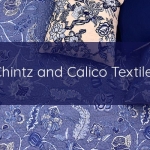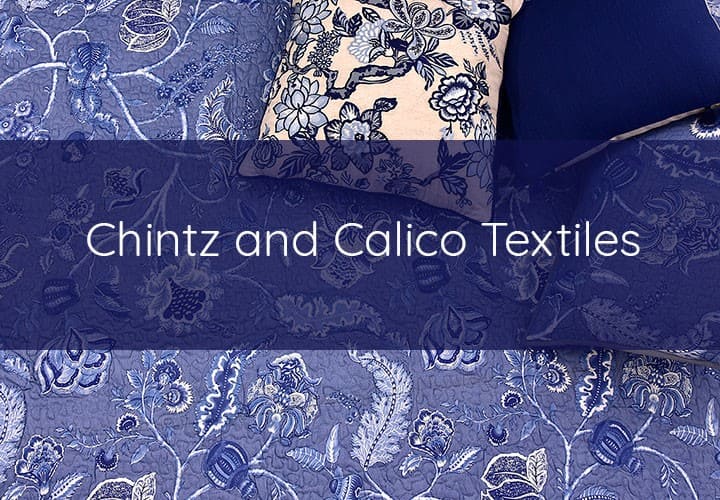- July 2, 2019
- 0 Comments
- skyy-blog
Have you heard of Calico textiles? It’s one of the most versatile textiles in the world. It’s a rough unfinished fabric which has been used extensively to make a multitude of products. Do you know where Calico originated? From the city of Calicut in India in the 11th century. From there it made its way across the world. Pretty cool right?
Now combine that with Chintz and you have yourself a winner combination.
A Little History
You’re probably wondering what is Chintz. Chintz was originally glazed calico textiles imported from India. The name is derived from the Hindi word chīnt meaning spotted.
It was first exported to Europe in the early 1600s where Indian chintz textiles quickly charmed the western market and caused quite a sensation. It initially referred only to light, cotton fabrics made in India for the English market.
Initially, these fabrics were used for curtains, furnishing fabrics, and bed hangings and covers. It has been suggested that wearing them as clothes began when these were replaced and given to maidservants, who made them into dresses, and also that they were first worn as linings.
But in modern times, it means a cotton or linen fabric with floral pattern stained with fast colours and is made all over.
About The Chintz Designs
The original chintz designs were hand-painted and resist-dyed but block-printed designs were incorporated later. Chintz designs are mostly European patterns loosely derived from the style of Indian designs themselves reflecting Mughal art.
Chintz production was a very complex process involving painting, mordanting (fixing a dye) and dyeing the cloth, depending on the colour being used. Different colours required different processes.
The Process
The process of producing this involved weeks of work – from making the natural dyes, cleaning the fabric (beating it with wooden bats), preparing it with a tannin solution (retrieved from plants), submerging it in various baths, rinsing and drying. The process has been simplified now and all kinds of dyes and well as automated processes are used to create these gorgeous textiles. The specific style of patterning that has evolved over the years is now referred to as Chintz and not necessarily the original technique.
Our Inspiration
Using this specific style of patterning as inspiration I have styled a few products that are just what your home needs when temperatures are soaring outside. No one wants to leave the comfort of their home and the best way to relax is to put on the air conditioning and chill under our Quilt & Sham Set in indigo. This is a beautiful representation of Chintz on Calico. This classic floral piece is a must-have in your bedroom to add that touch of simplicity and style this summer.



